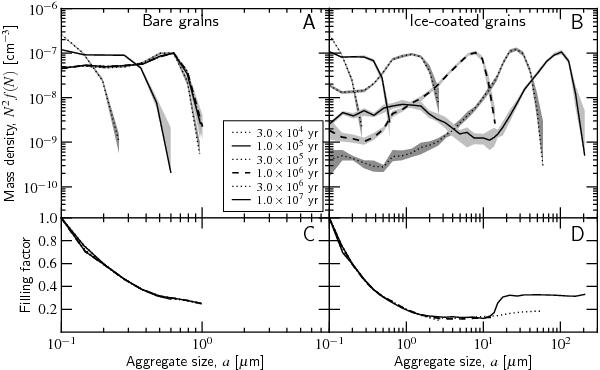Fig. 1

The size distribution of dust aggregates as function of time as calculated by Ormel et al. (2009) for bare grains (left panel) and ice-coated grains (right panel). The gas density is ng = 105 cm-3. For bare grains the size distribution evolves towards a steady state due to the emergence of fragmentation, while aggregates with ice-coated grains keep growing. The gray shading denotes the spread obtained from independent runs of the Monte Carlo code. The lower panels show the filling factor of the dust aggregates. Decreasing filling factors indicate a fractal structure. But for larger aggregates compaction halts the fractal growth.
Current usage metrics show cumulative count of Article Views (full-text article views including HTML views, PDF and ePub downloads, according to the available data) and Abstracts Views on Vision4Press platform.
Data correspond to usage on the plateform after 2015. The current usage metrics is available 48-96 hours after online publication and is updated daily on week days.
Initial download of the metrics may take a while.


